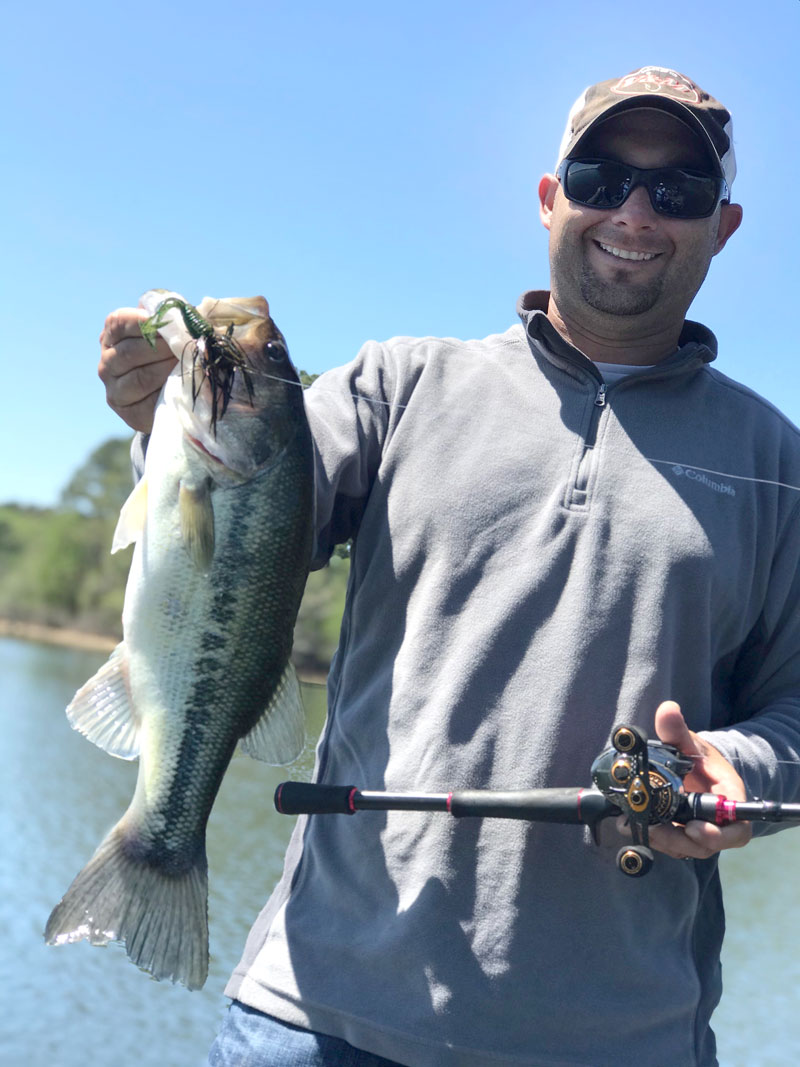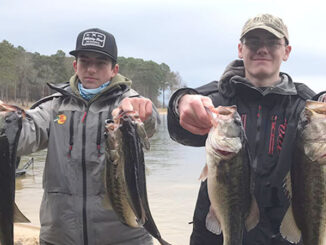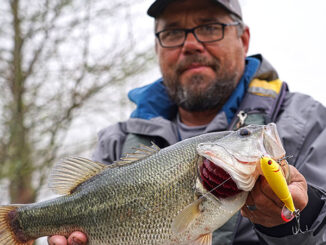
Cover, moving water attracts plenty of fish
One person’s watery highway can be another’s bass fishing hotspot.
Countless boaters use the G.A. Cut to travel from Myette Point boat landing north to Grand Bayou and Bayou Benoit boat landing, and vice versa, to various fishing destinations in that area of the Atchafalaya Basin.
The G.A. Cut, identified on most maps as Lake Fausse Pointe Cut, basically parallels the West Atchafalaya Basin Protection Levee before emptying into Grand Lake west of the Atchafalaya River just past Myette Pointe. As the crow flies, the area is between 25 and 30 miles long.
That makes it a heckuva long bassing hotspot for Damein Clements of Abbeville, a native of Franklin who doesn’t mind sharing proven methods to catch bass along the G.A. Cut. Clements started DCFishing in August 2020 and guides in the Atchafalaya Basin and at Toledo Bend.
The G.A. Cut a prime, deepwater cut with a strong current through the western half of the nation’s last great overflow swamp. Nevertheless, the fishing pressure is slight, even in August. Bass fishermen are missing out if they neglect the long waterway, Clements said.
“The first place that comes to mind is the G.A. Cut — all the logjams, deadfalls and cuts, moving water, shaded areas,” he said.
Clearer is better
Clements catches bass in the waterway starting when the Atchafalaya River hits 12 feet at Butte La Rose all the way to 4 or 5 feet at BLR, no matter whether the water’s dirty brown or clearer green. The bite gets better and better, however, as the water clarity improves.
“I’d start focusing around 12 feet (at BLR). The fish adapt to the clarity, and the moving water congregates fish around points and logjams,” he said. “I’d definitely start focusing on it in the 8-foot (BLR) range, when the backwater areas start dying and the bass move to moving water.”
Depth is important. While the G.A. Cut probably averages 20 to 35 feet deep, even when the river stage is 4 to 6 feet, there still are 8-foot depths just off the shoreline on the east and west sides as well as 2-foot depths right up against the bank.
“Yeah, (depth is) important,” Clements said. “The main focus should be on eddies of logjams or deadfalls. The fish could be in 2 feet on the bank, where the current break is. It could be 8 feet right outside that.”
When the river is higher and the water is dirtier, Clements loves to flip or pitch a black/blue V&M Pacemaker jig with a Swamp Hog soft-plastic trailer, or cast a chartreuse/white Cajun Tackle House bladed jig or chartreuse/black Strike King Squarebill 1.5 or 2.5 crankbait.
Naturally, Clements has some favorite spots along the G.A. Cut where 3-pound class bass and bigger live and help fill livewells in tournaments.
“One of the best stretches, in my opinion, is right south of Beehive Chute,” Clements said. “There’s a cluster of islands right outside Miller’s Chute. I wouldn’t fish more than 40 yards either side of the points. At any given time, they can give up a 3-pounder doing that.”
Find hardbottoms
Clements shared some secrets that have paid off handsomely. For example, there are a few shell beds and hard sandbars along the way that often hold lots of bass. There is a shell bed inside Crew Boat Chute on the lower end and east of the G.A. Cut. Another hard bottom is outside Miller’s Chute.
And, Clements said, “on the other side of Beehive, going toward Benoit on the left side, there’s a point, and where it ends is a hardbottom, a shell and sandy point.
“It’s something. You can hit a point and in 20 minutes possibly cull your whole limit before heading to the weigh-in. It can be real rewarding.”
Another favorite spot is the mouth of the bayou going to Buffalo Cove, where double-digit catches of barfish (yellow bass) and occasional bassing flurries are common.
Punch ’em out
If lily pads are piled up on the waterway’s log jams and such, Clements prefers a punching rig with a black/blue V&M J-Bug with the top claws pinched off. Soon, he said, he’s going to switch to a C-Craw, a soft-plastic bait designed for punching.
“It’s going to be my go-to bait for punching,” he said.
Clements said he’s getting more bites since downsizing his fishing line.
“I’ll go as low flipping as 14-pound test with Sunline FC Sniper” and as light as 12-pound line for squarebill crankbaits and bladed jigs.


